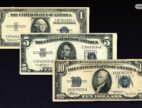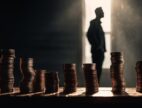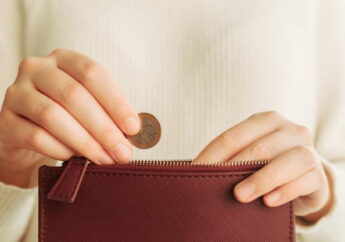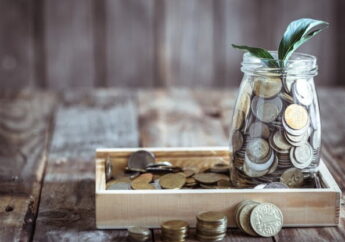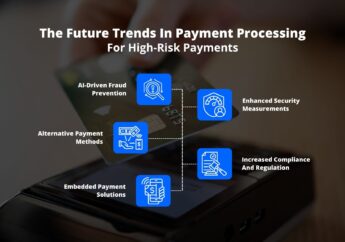How To Tell If A 100 Dollar Bill Is Real? – Let’s Understand
by Shahnawaz Alam Money Published on: 19 June 2023 Last Updated on: 14 May 2025

So, how to tell if a 100 dollar bill is real?
There is a considerable amount of counterfeit bills in circulation, and they have a massive negative impact on national and global currencies.
Did you know that there are almost $70 to $200 million counterfeit bills in circulation in the USA? Yes, you read it correctly.
Counterfeit bills reduce the real currency’s value and affect the general citizen through inflation. Counterfeiting can also cause monetary losses to many companies.
So, as a citizen or a consumer, it is important for you to learn to identify fake currencies. In this article, I have reviewed some tips for identifying $100 bills. Once you go through the steps mentioned here, you will be able to tell if a $100 is real or fake. So, without any delay, let’s get to it.
How To Tell If A 100 Dollar Bill Is Real: Check New Bills ( Post-2009 Series)
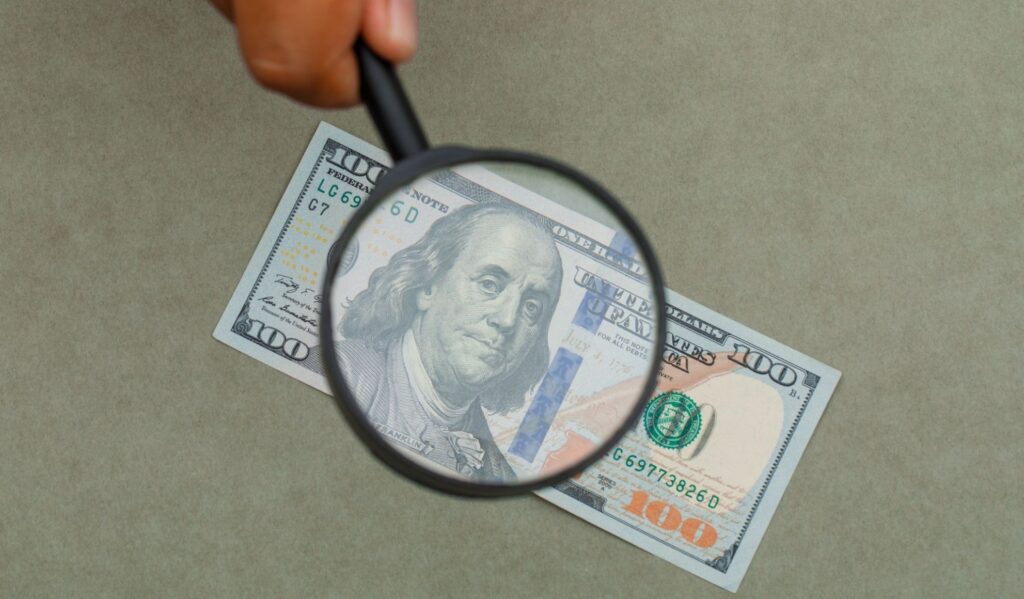
The first solution here is for the new bills that came in 2009 and later. Here are different ways of checking the new bills after 2009.
Check The Serial Number
The serial number mentioned in the two places of the note should correspond to each other. The serial number is usually written on the upper left and the lower right corner of the note. If the serial numbers do not match with each other, then chances are that you are dealing with a counterfeit note.
Here are some nifty tricks to keep in mind –
- The serial number usually starts with a J if the bill is a series 2009.
- The serial number will start with an L if the bill is series 2009A.
Here is the letter-to-year correlation that you must look out!
- E = 2004
- G = 2004A
- I = 2006
- J = 2009
- L = 2009A
Touch Franklin’s Shoulder
So, how to tell if a 100 dollar bill is real? Well, you can tell it by touching Franklin’s shoulder on the $100 note. The latest $100 note has a print of Franklin’s shoulder. Once you touch that part, you will feel a texture on the note. If you do not feel any texture on the note, it is probably fake.
Does The Ink Well Change Color?
On the left side of the serial number of a note, there should be an inkwell with a bell inside. This inkwell and the bell is has a copper color. But, if you start seeing from other angles, you will see the copper color changing to green. This is a sign that the $100 bill is a real one.
- You will also see the number 100 right next to the inkwell turning green. However, if you do not see it happening, the note can be fake.
Hold The $100 Up To The Light.
An embedded thread is on the left side of Ben Franklin’s portrait. The letter USA and the number 100 alternate alongside the strip. This thread, the letters, and the numbers are visible from both sides of the note.
- When held up to a UV light, the thread will glow pink in color.
- You can also buy a counterfeit note detector if you deal with lots of notes in your organization.
Check The Blue Security Ribbon
You will see a blue security ribbon on the right side of the portrait of Ben Franklin. This is a 3D ribbon, and you will see the number 100. The ribbons move from one side to another as you see them from different angles.
- The ribbon gets woven inside the paper. You cannot peel it off. But, on the contrary, if you can, then it means that the note is a fake one.
Watermark Portraits
So, how to tell if a 100 dollar bill is real without a counterfeit detector? You can simply do that by checking out the watermark portrait of Ben Franklin. On the right side of the note, you will see a faint image of Ben Franklin.
Look For The Blue Security Ribbon
There should be the phrase “The United States of America” written in the micro-sized font on the collar of Franklin’s jacket. The white space containing the portrait should also have “USA 100” written on it.”
- The ribbon is interlaced inside the paper. You cannot peel it off, but if you can, it means the note is fake.
How To Tell If A 100 Dollar Bill Is Real: Check Older Bills ( Pre-Series 2009)
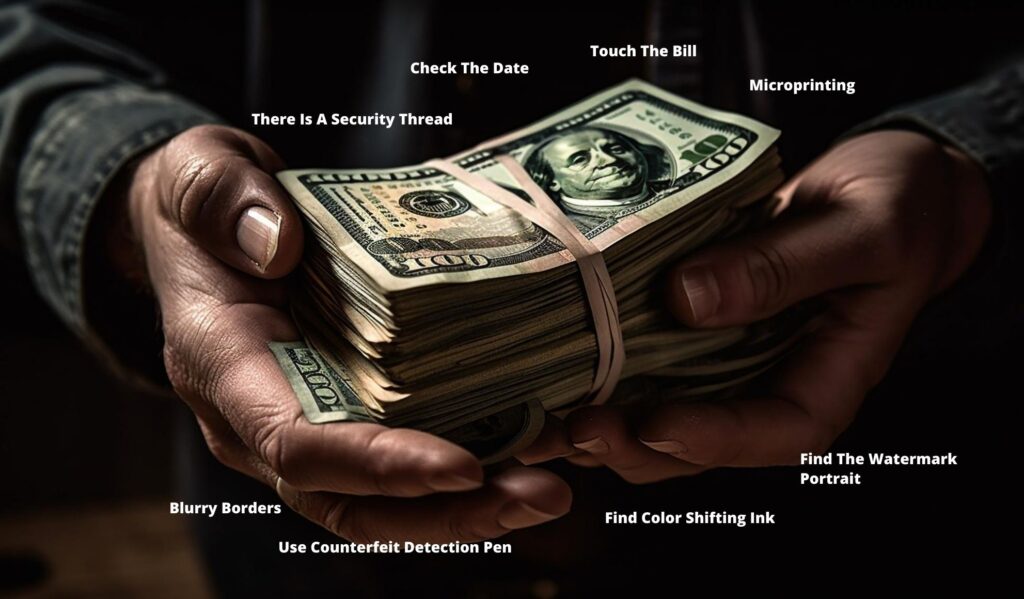
The 100-dollar bills from before 2009 are a little old-fashioned and do not come with the security features as many as the newer ones get. So, here are the different ways of checking the 100-dollar bills from before 2009. That is why they are getting phased out of circulation to put a stop to counterfeiting.
Check The Date
The average 100 dollar bills stay in circulation for seven years only. So, most of the older bills should be out of circulation by now. However, if there are any older 100-dollar bills stored at your home, you can check them. It is better to check the date on the bill to see if they are counterfeit or real.
Touch The Bill
The older 100 dollar bills are printed on linen or cotton. So, they are not paper. Also, as part of the printing process, the bills usually have ink raised slightly on top of the notes. This should come naturally to you if dealing with currency is your job.
- It is difficult for the counterfeiters to create the raised ink on the bill. So that is almost a foolproof method to tell if a $100 is real.
There Is A Security Thread
You can look for the security thread. 100-dollar bills printed before 1990 usually have a security thread on the left-hand side. You will be able to see it when the note is held up to the light. The thread also glows pink when you put it in front of UV light.
Microprinting
How to tell if a 100 dollar bill is real? One of many simple ways of checking if the $100 bill is real or not is by checking the microprinting on it. You will see the microprinting based on the year the bills were issued.
- You will see the phrase “The United States of America” printed on the outer edge of the oval that contains the portrait. This feature is exclusive to the notes printed between 1990-1996.
- On the lower left side of the note, the number 100 should remain printed. This part of the print has the phrase “USA100” should appear. 100-dollar bills issued between 1996-2013 should have this feature exclusive to them.
- On the left lapel of Ben Franklin’s coat, you will also see the phrase “The United States of America” printed.
Find Color Shifting Ink
The bills issued between 1996 and 2013 should also have color-shifting features. You can take the note into the light and tilt it to see the green color on the numeric 100 shifting from green to black. This is one of the features that let you decide if the note is a counterfeit.
Find The Watermark Portrait
How to tell if a 100 dollar bill is real? Well, have you tried to check the watermark portrait of Ben Franklin? There should be a portrait on the right-hand side of the note, and it should be faintly visible once you lift it in the light. The watermark portrait should be visible from both sides of the note.
Blurry Borders
There should not be any blurry borders on the 100 dollar bills. The real bills have clear and sharp lines that are very sharp and difficult to counterfeit. If you see any blur in terms of the texts or the borders, then you have a counterfeit note on your hand.
Use Counterfeit Detection Pen
Counterfeit notes use some common chemicals. You can check them using a counterfeit checkpoint. These pens are pretty cheap, and they come for $5 on Amazon. However, the counterfeiters are now more aware and clever. That is why using this pen might not work.
- But you can go for the counterfeit detector pen that comes with UV rays. These pens cost you $10.
How To Report If A 100 Dollar Bill Is Not Real?

Those were some specific ways of identifying counterfeit 100 dollar bills. However, you should also know how to report such notes once you have found them.
Now, if you are running a business, you may unknowingly accept fake money from your vendors or customers. Exchanging the phony money for genuine cash can be very difficult.
This can further lead to major monetary damage. On top of that, the distribution of counterfeit bills can also make a huge impact on the overall economy and customer confidence.
But? You can always report the counterfeit bills! Let’s take a look at them!
Compare Side By Side
When someone gives you a counterfeit bill at a shop or any organization, then it is best to compare it to other real bills. You should also try to delay the person who handed the counterfeit note to you. You should also notify them that the manager should check the note, so they have to wait.
Note Down Details
Once you have received a counterfeit from someone, you should note down the details of that person. These details include their age, hair color, height, eye color, weight, and other details.
- If the person holding the note drove to your organization, take note of their car or bike’s number plate as well.
- Most people handing you a counterfeit are usually innocent. They usually have no clue if the note they have is a counterfeit or not. So, it is unnecessary to try to perform citizen’s arrest. Just taking their details and contact info is enough.
Initialize The Bill
Next, you have to write down your initials, then the date on the white border that surrounds the $100 bill.
Identify & Put Aside The Counterfeit
Next, you have to hand the note to the police. The police can pull the fingerprints off of the notes, so we advise not touching the note as much as possible. You should store the note inside an envelope in your cash register. Once you put the note inside the envelope, you have to mark the envelope as “counterfeit.”
Make sure not to put the note among the real 100 dollar bills. It is better to write the word “counterfeit” on top of the envelope you put the bill in.
Call The Police
You can take the note to the police station or call the police and give them your location. Once you hand the $100 bill to the police, they will most probably contact the Secret Service and ask them to investigate. You can also choose to contact the Secret Service directly and ask them to look into it.
Hand Over The Fake 100 Bill
Once you have reported the counterfeit to the police station or the secret services, you can hand the note over to them. But make sure that you hand the note over to an identified bill alone. Also, if you give the bill to the Secret Service, you have to fill in a Counterfeit Note Report for all of them.
Bottom Line
U.S. Currency education program manager Sonja Danburg has said that $100 notes in circulation are worth $900 billion. Half or two-thirds of the notes exist outside the US. Currently, there is $1.5 trillion in US currency in circulation. A little less than 1/100th of 1% of that value is counterfeit. The $100 bills are among them.
So, it is crucial to know which note is real and which one is a counterfeit. Once you have gone through this article, you will know how to tell if a 100 dollar bill is real. If you have any similar queries, please let us know through the comment section.
Additional Reading:


























































































